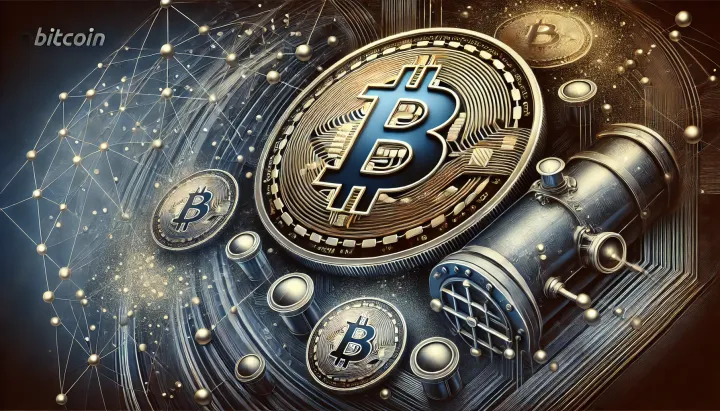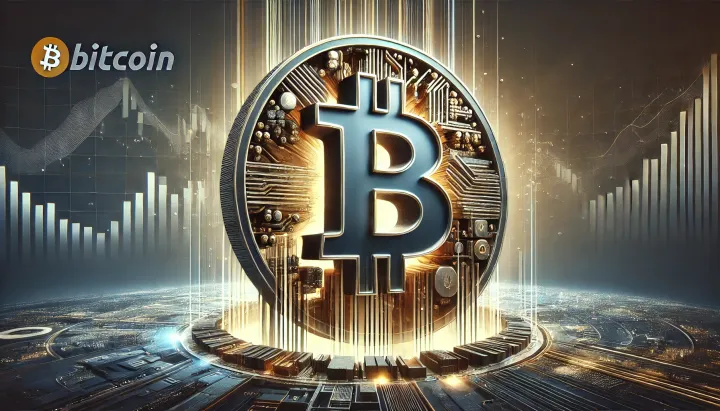Yield Strain, Gold Crunch, and Bitcoin Reserve Pivot
The April 28, 2025 episode of the Bitcoin Matrix podcast features analyst Peruvian Bull dissecting Japan’s yield-curve quagmire, global gold shortages, and naked-short abuses in U.S. equities. He argues that corporate Bitcoin-treasury strategies offer a hard-asset hedge as legacy safeguards erode.

- My 'briefing notes' summarize the content of podcast episodes; they do not reflect my own views.
- They contain (1) a summary of podcast content, (2) potential information gaps, and (3) some speculative views on wider Bitcoin implications.
- Pay attention to broadcast dates (I often summarize older episodes)
- Some episodes I summarize may be sponsored: don't trust, verify, if the information you are looking for is to be used for decision-making.
Summary
The April 28, 2025 episode of the Bitcoin Matrix podcast features analyst Peruvian Bull dissecting Japan’s yield-curve quagmire, global gold shortages, and naked-short abuses in U.S. equities. He argues that corporate Bitcoin-treasury strategies, already showcased by Metaplanet and potentially GameStop, offer a hard-asset hedge as legacy safeguards erode. These insights frame Bitcoin as an emerging reserve candidate once regional fiat systems falter.
Take-Home Messages
- Yen Carry Risk: Thirty years of zero rates created a mammoth leveraged trade that could unwind violently and spill across global bonds.
- Bitcoin Balance-Sheet Hedge: Metaplanet’s 10 000 % rally shows how Bitcoin treasuries can unlock capital and retail enthusiasm in stagnant markets.
- Physical Gold Stress: January COMEX withdrawals and 6 % BOE lease rates expose tightening bullion supply and a fragile paper-gold price.
- Dollar-Debt Time Bomb: A weaker DXY spurs fresh Euro-dollar borrowing, storing kinetic energy for the next liquidity crunch.
- First-Mover Advantage: States and firms that accumulate Bitcoin early will shape future trade and energy-settlement norms while late adopters pay a premium.
Overview
Peruvian Bull explains that the Bank of Japan has spent three decades pinning long-dated yields near zero, inflating public debt and encouraging global investors to borrow yen for higher-return bets abroad. Recent U.S. rate hikes widened the gap to such an extent that the yen slid to 150 per dollar and Tokyo was forced into frantic interventions that nevertheless deepened structural stress. Policymakers now rely on surprise moves, rate tweaks one week and currency support the next, that ripple through every major bond desk on Earth.
Corporate treasurers are already looking for lifeboats. Metaplanet’s decision to convert a portion of cash into Bitcoin electrified Japanese retail investors, tripling shareholder attendance and sending the stock up more than one hundredfold in a traditionally sleepy market. Peruvian Bull treats this outcome as evidence that a hard-cap digital asset resonates with savers who sense that yen purchasing power and domestic equity returns are both trapped in low-growth limbo.
GameStop offers a parallel in the United States, where naked-short volumes exceeded the entire share float and exposed loopholes that manufacture “phantom” stock. By tapping a new convertible bond and signaling interest in Bitcoin, the company could unite two activist communities—long-suffering retail traders and hard-money advocates—while demonstrating a reserve strategy that mainstream auditors must eventually address. In Peruvian Bull’s view, the episode also spotlights how weak enforcement undermines trust in U.S. capital markets and accelerates the search for tamper-proof alternatives.
Traditional safe havens show similar strain. January redemptions stripped 1.9 million ounces from COMEX, drained London vaults, and forced the Bank of England to lend bullion at six-percent rates, a twenty-fold jump that stunned traders accustomed to quarter-point leases. If confidence in paper-gold contracts breaks, he warns, institutional capital will migrate to reserves whose scarcity can be verified instantly on-chain rather than through opaque vault ledgers.
Stakeholder Perspectives
- Bank of Japan – Must chart a bond-market exit that avoids detonating domestic refinancing costs.
- U.S. Market Regulators – Face pressure to curb naked shorting and track stablecoin-driven Euro-dollar creation.
- Corporate Treasurers – Evaluate Bitcoin as working-capital insurance against currency erosion and metal shortages.
- Retail Investors – Flock to Bitcoin-treasury equities as a protest against opaque markets and shrinking real wages.
- Gold-Market Intermediaries – Confront rising lease costs and credibility risks as physical supply tightens.
Implications and Future Outlook
Persisting BOJ volatility could ignite a leveraged yen unwind that forces synchronized liquidity injections, and the resulting policy response would make Bitcoin treasuries more attractive to multinationals sitting on idle cash. Such an episode would also intensify demand for standardized collateral rules across derivatives and FX desks, reshaping global risk models in ways that reward transparent assets. Corporations that front-run this shift by adopting Bitcoin may gain reputational and funding advantages over slower peers.
Bullion scarcity elevates audit transparency as a sovereign priority; if gold-exchange inventories remain opaque, long-term allocators may funnel wealth toward assets with provable limits and instant settlement finality. Bitcoin’s programmable custody and public ledger already perform that function without physical transport or counterparty risks. Should paper-gold credibility fracture decisively, even conservative pension funds may reconsider their store-of-value mix.
Stablecoin growth extends dollar relevance yet complicates the Federal Reserve’s grip on offshore liquidity, highlighting a governance gap that a neutral, borderless reserve asset can fill. Early-adopting nations, particularly energy exporters able to monetize surplus generation through mining, will gain leverage in commodity pricing and bilateral trade. Lagging states risk higher entry costs and diminished negotiating power as Bitcoin supply halves again and institutional demand broadens.
Some Key Information Gaps
- How can the BOJ exit yield-curve control without triggering a global bond shock? Credible roadmaps are vital to preserve pension solvency and fiscal stability.
- Which early-warning indicators best capture looming Euro-dollar rollover risk? Timely data would let policymakers pre-empt liquidity squeezes and contagion.
- What accounting standards should govern corporate Bitcoin-treasury holdings? Clear guidance would accelerate adoption while safeguarding investors.
- What mechanisms can increase physical-gold transparency at COMEX and LBMA? Enhanced audits could restore trust or confirm the need for alternative reserves.
- Which criteria should guide national decisions to accumulate Bitcoin reserves? A structured framework helps governments balance strategic security with fiscal feasibility.
Broader Implications for Bitcoin
Decentralized Reserve Architecture
Moving from fiat liabilities to digitally scarce reserves would disperse seigniorage benefits and reduce the monetary leverage wielded by any single entity. More symmetrical trade relationships could emerge as cross-border settlements bypass correspondent-bank choke points. Over time, this architecture may tether diplomatic influence to energy efficiency and cryptographic security rather than legacy clearing privileges.
Corporate Funding Innovation
Bitcoin-treasury strategies reveal that balance-sheet optionality can restore market attention, lower capital costs, and align brands with digital-native consumers who distrust fiat savings. Firms integrating Lightning payments and BTC reward loops may capture new revenue while hedging inflation drag on idle cash. Such adoption pressures auditors, insurers, and rating agencies to craft tailored risk products, broadening institutional acceptance.
Gold-Market Transparency Shock
If paper-gold prices decouple from dwindling physical supply, sovereign and pension allocators will scramble for verifiably scarce alternatives. Blockchain-based vault audits could surface, yet Bitcoin’s public ledger already offers real-time assurance without custody disputes or geopolitical export controls. A decisive pivot toward on-chain reserves would erode bullion-bank business models and redirect mining investment toward proof-of-work networks.
Energy-Backed Bitcoin Settlement
Resource exporters exploring Bitcoin pricing can pair stranded generation with Bitcoin mining, converting otherwise wasted energy into liquid monetary reserves. This strategy strengthens local grids, diversifies government balance sheets, and attracts foreign direct investment from energy-intensive industries seeking stable tariffs. As more commodities clear in Bitcoin, geopolitical alliances may realign around low-cost power hubs rather than traditional military blocs.



Comments ()